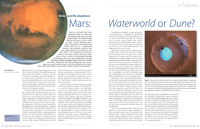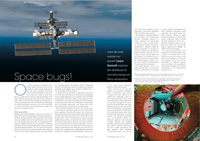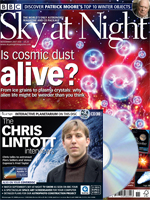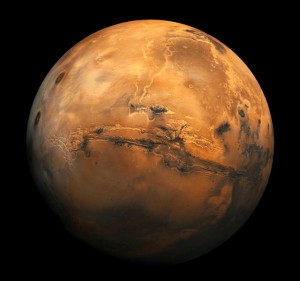Mars: Waterworld or Dune?
 There’s an old email that’s been doing the rounds for a while now, proclaiming that water has been found on Mars. The attached image double‑clicks open to show a glass of water smartly balanced atop a Mars chocolate bar. Very droll, but this humour does hint at a fundamental question that planetary scientists have been asking about the red planet for decades. What is the prevalence and history of water on the surface of Mars? And more importantly, at least in terms of the biological potential of the planet, what is the story of liquid water: the state necessary to sustain and support life as we know it. Has Mars ever been a Waterworld, with long‑standing lakes, seas and perhaps even a great northern ocean, or has the red planet forever been a desert, like Frank Herbert’s science‑fiction creation, Arrakis, the Dune planet?
There’s an old email that’s been doing the rounds for a while now, proclaiming that water has been found on Mars. The attached image double‑clicks open to show a glass of water smartly balanced atop a Mars chocolate bar. Very droll, but this humour does hint at a fundamental question that planetary scientists have been asking about the red planet for decades. What is the prevalence and history of water on the surface of Mars? And more importantly, at least in terms of the biological potential of the planet, what is the story of liquid water: the state necessary to sustain and support life as we know it. Has Mars ever been a Waterworld, with long‑standing lakes, seas and perhaps even a great northern ocean, or has the red planet forever been a desert, like Frank Herbert’s science‑fiction creation, Arrakis, the Dune planet?
Download pdf










